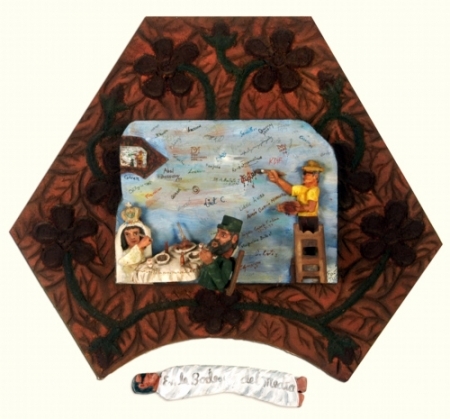Among the many names and derivations bestowed on the Virgin Mary, the most popular are the Virgen de la Caridad, Virgen del Carmen, Virgen de la Candelaria, Virgen de Guadalupe, Ntra. Señora de Covadonga, Virgen de Regla, Ntra. Señora de los Remedios, etc. A standout on this long list, owing to its strong and lengthy tradition, the popularity of its cult, and its integral role in the formation of Cuban national identity is the name of the Virgen de la Caridad del Cobre. As for the story of her appearance, most believers take as true the discovery of the Caridad del Cobre image by three fishermen with the same name—Juan, or John—in the Bay of Nipe in eastern Cuba at the beginning of the 17th century: 1612, to be exact.
At the grassroots level, the image of the Virgen de la Caridad has been recognized primarily by the blue of her traditional costume or the color yellow, associated with the golden dress in which she was officially crowned by the Catholic Church as the patron saint of Cuba in 1916; by the boat with the three Juans situated at her feet; and by her golden brown face.
Spurred by the economic, social and cultural situation that arose with the collapse of the Soviet Union and other socialist governments, and the economic and spiritual impact of these changes on Cuban society, the 1990s saw a strengthening of religious practices on the island. This is consistent with an open and flexible attitude on the part of the Cuban government toward such religious practices, and for an improved relationship between the government and the Catholic Church in Cuba. Given these circumstances, the arts in Cuba saw an unprecedented upsurge in topics related to the Christian faith.

Leave a comment